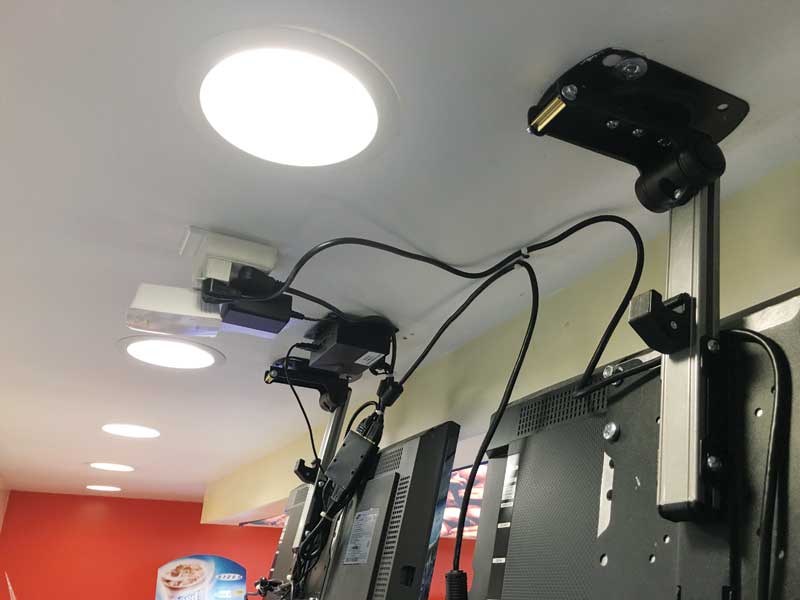
These ceiling mounts were used for an installation in a convenience store.
On-site factors
Other location-specific considerations include the timing of preparation work and installation, as it may be important to avoid disrupting regular business activities at the premises. Installers may require access to remote technical support and additional tools and resources for unanticipated situations, whether at a stockroom, warehouse or nearby hardware store, in which case those outside facilities’ opening hours will also come into play.
There may be a need for permits or authorizations from the landlord. And it is important to plan parking and site access well in advance.
Post-installation support
Whatever the customer’s service-level agreement (SLA), he/she should be given a designated point of contact for post-installation support. This could be a helpdesk or hotline, so long as appropriate action can be taken when needed.
If a problem cannot be diagnosed remotely, a technician will need to be dispatched to the site for in-person troubleshooting. And if the diagnosis—either remote or in-person—calls for equipment to be swapped out, the logistics of delivering the new equipment will need to be co-ordinated.
Pricing can be based on SLA requirements. Most customers are willing to pay a higher price for faster service.
William Kazman is founder and president and Paul Gilmartin is vice-president (VP) of iTeam, which installs and supports information technology (IT) and audiovisual (AV) systems, including digital signage networks, across Canada and the U.S. This article is based on a seminar Gilmartin presented at the International Sign Association’s (ISA’s) 2016 International Sign Expo. For more information, contact him via e-mail at pgilmartin@iteam.com and visit www.signs.org.





